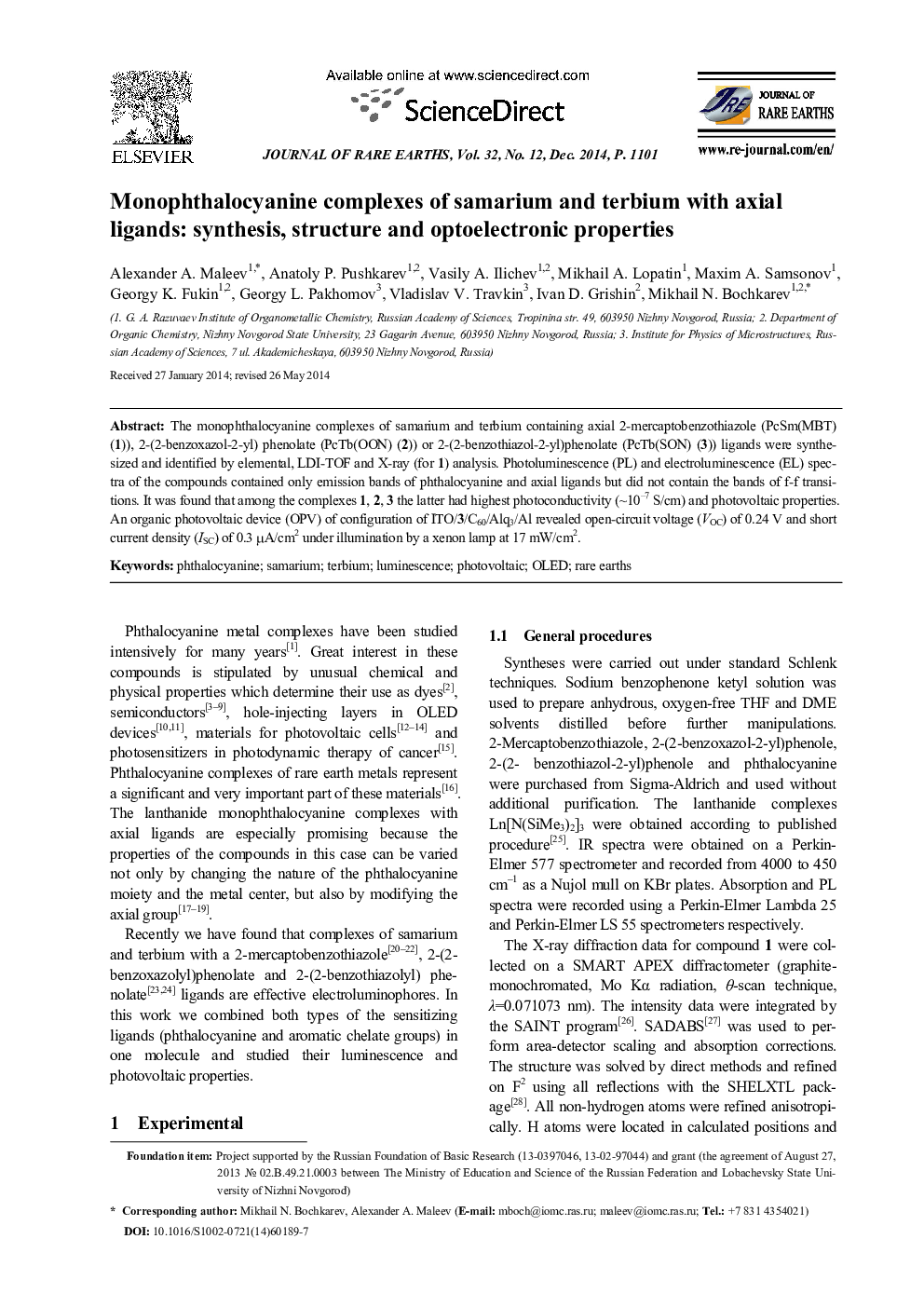| Article ID | Journal | Published Year | Pages | File Type |
|---|---|---|---|---|
| 1260713 | Journal of Rare Earths | 2014 | 8 Pages |
The monophthalocyanine complexes of samarium and terbium containing axial 2-mercaptobenzothiazole (PcSm(MBT) (1)), 2-(2-benzoxazol-2-yl) phenolate (PcTb(OON) (2)) or 2-(2-benzothiazol-2-yl)phenolate (PcTb(SON) (3)) ligands were synthesized and identified by elemental, LDI-TOF and X-ray (for 1) analysis. Photoluminescence (PL) and electroluminescence (EL) spectra of the compounds contained only emission bands of phthalocyanine and axial ligands but did not contain the bands of f-f transitions. It was found that among the complexes 1, 2, 3 the latter had highest photoconductivity (~10−7 S/cm) and photovoltaic properties. An organic photovoltaic device (OPV) of configuration of ITO/3/C60/Alq3/Al revealed open-circuit voltage (VOC) of 0.24 V and short current density (ISC) of 0.3 μA/cm2 under illumination by a xenon lamp at 17 mW/cm2.
Graphical AbstractFigure optionsDownload full-size imageDownload as PowerPoint slide
